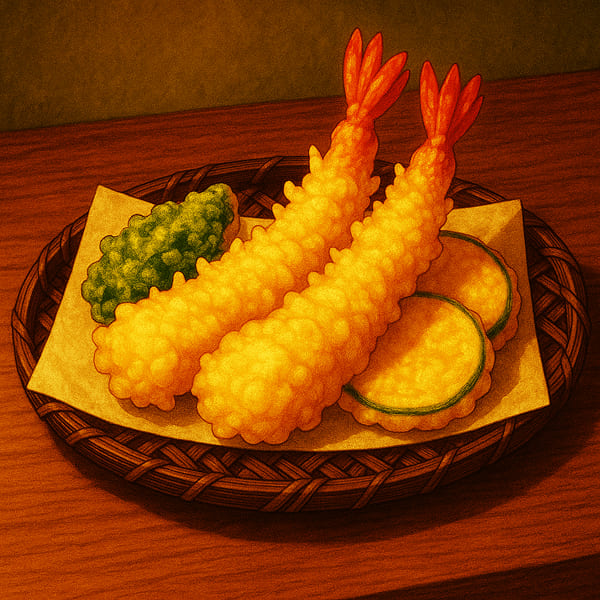Tempura: A Crispy Icon of Japanese Cuisine and Culinary Art

Contents
Golden, crisp, and impossibly light—each bite of tempura is a masterclass in Japanese culinary elegance.
Far beyond a simple fried dish, tempura reflects Japan’s deep respect for seasonality, refinement, and visual harmony. With its delicate crunch and subtle flavors, tempura transforms humble ingredients—like shrimp and root vegetables—into edible art.
In this guide, we’ll uncover the fascinating origins of tempura, explore the techniques and etiquette behind its perfection, and see how this iconic dish continues to evolve both in Japan and around the world. Whether you’re a curious foodie or a devoted Japan enthusiast, tempura offers a delicious window into the heart of Japanese culture.
A Brief History of Tempura in Japan
The origins of tempura in Japan date back to the 16th century, when Portuguese missionaries introduced batter-frying techniques. The name “tempura” is derived from the Latin word tempora, referring to Christian fasting days when meat was prohibited.
Initially, tempura was limited to port cities like Nagasaki. However, by the Edo period (1603–1868), it had evolved into a popular street food in bustling cities such as Edo (modern-day Tokyo). Over time, the Japanese refined the dish into the elegant version we know today, emphasizing lighter batter and seasonal ingredients.
Key Ingredients and How Tempura Is Made
What makes good tempura truly exceptional is the balance of texture and flavor. Common tempura ingredients include:
- Shrimp (ebi)
- White fish like whiting or flounder
- Seasonal vegetables such as sweet potato, pumpkin, eggplant, mushroom, and green beans
The batter is typically made with cold water, wheat flour, and occasionally egg. This combination results in a light, crispy coating that enhances—not hides—the ingredient’s natural taste.
Tempura is deep-fried at high temperatures, sealing in moisture while creating a golden, airy crust. The result is crispy on the outside and tender on the inside.
How to Eat Tempura: A Quick Etiquette Guide
Eating tempura properly adds to the experience. Here are some tips:
- Use chopsticks—never your hands—when dining at restaurants.
- Dip lightly into tentsuyu (a savory dipping sauce made from soy sauce, dashi, and mirin). Avoid over-soaking to maintain crispiness.
- Eat in one bite when possible to enjoy the full flavor and texture.
Tempura is often served in a set meal with rice, miso soup, and pickles, or as tendon—tempura served over a bowl of rice. Another variation is tentamadon, where tempura is simmered with egg in a sweet-savory sauce and served over rice.
The Cultural Significance of Tempura in Japan
Tempura isn’t just food—it’s part of Japanese tradition. It’s commonly enjoyed during festivals, family gatherings, and seasonal celebrations like New Year's (Oshogatsu), symbolizing good fortune and abundance.
Moreover, the dish embodies Japan’s appreciation for shun(旬), or seasonal eating. Chefs carefully select the freshest seafood and vegetables, making tempura a reflection of nature’s rhythm and the changing seasons.
Tempura Around the World: A Global Favorite
Thanks to the global popularity of Japanese restaurants, tempura can now be found in cities across Europe, the Americas, and Asia. Creative fusion versions—such as tempura-fried vegetables in Western dishes—demonstrate how the dish continues to evolve internationally.
Despite modern twists, traditional tempura remains revered for its lightness, aesthetic presentation, and meticulous preparation.
Final Thoughts: Discover the Art of Tempura
Tempura is much more than a fried dish—it’s an art form. With its simple ingredients, refined cooking method, and deep cultural roots, tempura is a perfect gateway to understanding the spirit of Japanese cuisine.
Whether you try authentic tempura in Japan or explore it abroad, savor not just the taste, but the craftsmanship, tradition, and seasonality it represents.